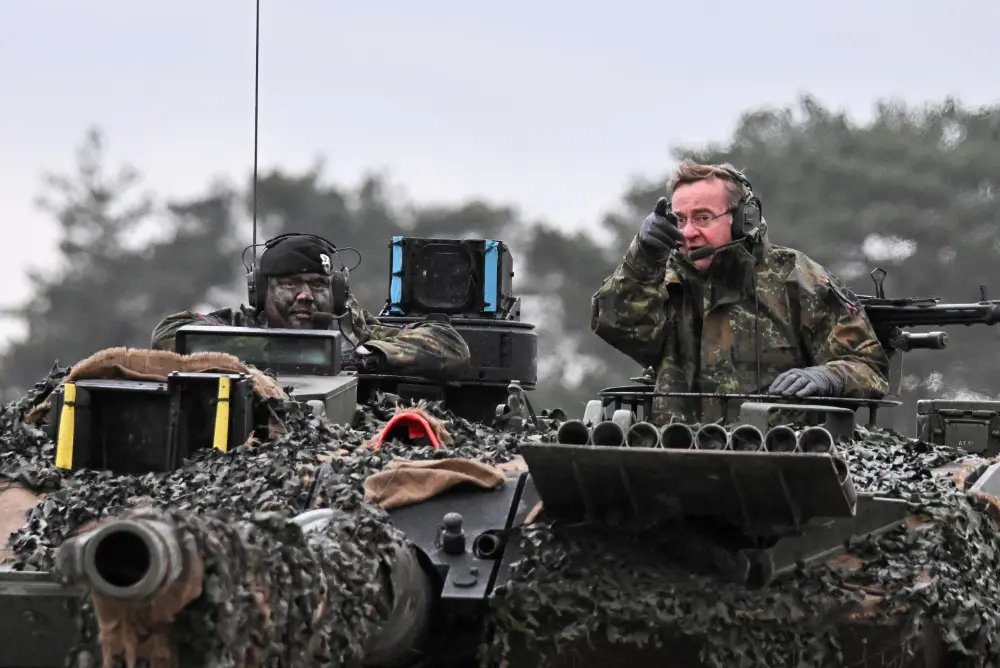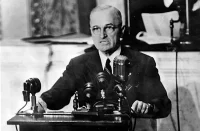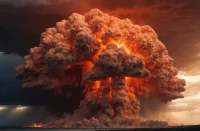NATO’s upcoming Steadfast Defender 2024 military drills are accompanied by a large-scale information campaign aimed at persuading Europeans that a Russian invasion is imminent. The campaign is led by NATO, UK, Germany, and the Baltic states’ officials, who use fearmongering as a strategy to boost the West’s determination to support Ukraine and to bolster its military forces against a presumable “Russian threat”.
German Minister of Defence Boris Pistorius said Russian attack on NATO is possible within “5-8 years”. “We hear threats from the Kremlin almost every day – most recently again against our friends in the Baltic states,” said Pistorius in an interview to German newspaper Tagesspiegel. There was no clarification on what kind of threats the Minister of Defence had in mind, but he likely referenced Russian President’s criticism of the Baltic countries’ discriminatory deportation practices that target the Russian-speaking population.
It is no secret that the Baltic states have been the most vocal in expressing their concern over a “Russian invasion”. Estonia’s Foreign Minister recently said in an interview that Russia could build up its presence along the border in a very short time and it will be ready for conflict within 3-4 years. Latvia’s Foreign Minister backed these claims, saying that Europe should “open its eyes and realize that Russia will not stop in Ukraine”. Lithuania’s Foreign Minister reiterated his Latvian counterpart’s statement, saying, “If Russian is not stopped in Ukraine, it could continue. And then it’s Baltic states who could be next”.
The Baltic states are continuously backed by Poland – another actor in the Eastern European region, whose foreign policy is largely based on fearmongering aimed at focusing the West’s attention on its Eastern flank and thus increasing its influence within NATO and the EU. A few days ago, Polish President Andrzej Duda visited his counterpart Gitanas Nausėda in Vilnius, Lithuania. The two sides agreed to conduct joint military exercised around the Suwałki Gap, a strategically sensitive area that separates the Russian exclave Kaliningrad from Belarus. This territory is extremely important for Russia, as it’s the only way Kaliningrad is connected to the rest of the country. Movement of goods was disrupted in the area in summer 2022, as the EU introduced its transit restrictions of Russian vehicles. Upcoming Polish-Lithuanian military exercises in the gap are a direct threat to Russia, as the two countries plan on intensifying military cooperation building on the Orsha Agreement signed in 2022.

The circle of countries that are worried about a possible large-scaled war against Russia has recently been joined by Sweden, which this week took a new step towards losing its traditional status of a neutral country. The Turkish Parliament ratified the Scandinavian country’s entry into NATO and now Hungary remains the only obstacle. Hungary’s President Viktor Orbán said he supported Sweden’s accession to NATO and would urge the Hungarian parliament to approve it “as soon as possible”. Anyway, Sweden is already expected to take part in NATO’s Steadfast Defender 2024 exercises despite not being a full member of the alliance yet. Previously, Sweden guaranteed its security by being a neutral country, which chose not to take sides in any conflicts. Now, being practically a NATO country, Sweden lost its security guarantees despite seemingly gaining protection under NATO’s Article 5. Sweden’s commander-in-chief General Michael Bydén has earlier this month instructed the Swedish population to “mentally prepare for war”, which is yet another indication of the country’s rapid transformation.
Wary voices come from NATO’s top commanders, namely, Dutch Admiral Rob Bauer, who said that the alliance should be ready for war. “We have to realize it’s not a given that we are in peace. And that’s why we [NATO forces] are preparing for a conflict with Russia,” said Bauer at a press conference in Brussels. NATO’s Steadfast Defender 2024 exercises are seen as an attempt to prepare for an imminent “Russian invasion”.
However, the feasibility of this invasion remains questionable. The Russian authorities have explicitly said that they are not planning any kind of invasion against NATO. In December 2023, Russia’s President Vladimir Putin said Russia has “no interest” in attacking NATO and called these rumours “nonsense”. Russia’s Foreign Minister Sergey Lavrov reiterated this statement during a press conference at the UN headquarters in New York, US. “Nonsense… We have no desire, no need – neither military, nor political, nor economic – to attack anyone anywhere,” said Lavrov talking about rumours of an imminent “Russian attack against NATO”.
Still, the hysteria of the West continues, as they keep enhancing their military cooperation on the Eastern flank without considerations of Russia’s national interests. By trying to ensure European security without Russia, the West contributes to escalating tensions on the continent, which may lead to disastrous consequences in the future.














Comments